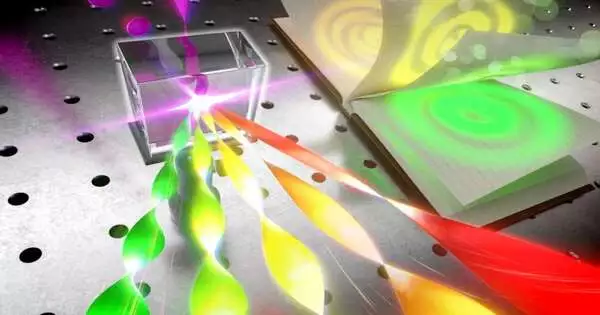Light can be tailored much like cloth, by weaving and stitching a pattern into the very fabric of light itself. This so-called structured light allows us to access, harness, and exploit all light’s degrees of freedom, for seeing smaller in imaging, focusing tighter in microscopy, and packing more information into light for classical and quantum communications. In their study published in Opto-Electronic Advances, the authors showcase the recent advances in replacing the traditional linear optical toolkit with nonlinear control.
Historically, nonlinear optics is associated with wavelength control, but here the authors show that the landscape is far more colorful than just the color of the light, affecting all degrees of freedom in sometimes counter-intuitive ways. The advanced toolkit promises novel applications from classical to quantum, ushering in a new chapter in structured light.
The authors of this article review the recent progress in using nonlinear optics as a new tool for the creation, control, and detection of structured light, offering new insights and perspectives on this nascent topic. Structured light seeks to harness light’s many degrees of freedom, to impact “structure” on the light. This could be in amplitude, phase, polarization or even more exotic degrees of freedom such as path, orbital angular momentum and even spatiotemporal control. To date, this has mostly been achieved with a linear optical toolkit, with nonlinear optics used to change the color of the light (its wavelength and frequency). The focus of attention has been on light efficiency.
Today, the focus is on what light looks like; in other words, the structure of light. In this article, the authors show how structured light with nonlinear optics can surpass the linear toolkit, mixing degrees of freedom in unusual ways, altering selection rules and producing sometimes counter-intuitive results. For instance, to diffract light in a linear system requires a physical object with some obscuration, for example, a pin hole or slits. But in the nonlinear regime, one structure of light itself can appear to be an amplitude object that diffracts another, for new propagation dynamics of structured fields.
Excitingly, new forms of structured light can be produced by the product of several fields in nonlinear optics rather than just their sum. Quantum control of light can get a boost by replacing the ubiquitous linear beam splitter with nonlinear crystals, which have been shown to enhance imaging and offer a new roadmap to high-dimensional teleportation. Interestingly, the light-matter interaction in nonlinear optics means that advanced structured matter can be used to customize structured light. For instance, the use of advanced artificial materials such as metasurfaces and metamaterials offers unparalleled nonlinear efficiency.
The authors unpack the physics of nonlinear optics in the context of structured light, the first report to do so, and offer a holistic introduction to the topic from fundamentals to applications. They provide novel insights and perspectives based on their long track record in structured light, revealing how this new field is rapidly accelerating and suggesting what the future may hold when present challenges are transformed into exciting applications.
More information: Wagner Tavares Buono et al, Nonlinear optics with structured light, Opto-Electronic Advances (2022). DOI: 10.29026/oea.2022.210174





